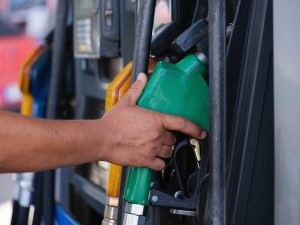Contents
How to Test a Fuel Injector: A Comprehensive Guide
If you suspect your vehicle’s fuel injector is causing issues, diagnosing and testing it properly is essential.
A malfunctioning fuel injector can lead to various problems like poor fuel economy, engine misfires, and decreased performance.
In this article, we’ll provide you with a step-by-step guide on how to test a fuel injector effectively.
By following these procedures, you can identify any potential issues and ensure that your vehicle’s fuel system is in optimal condition.
How to Test a Fuel Injector
1. Gather the Necessary Tools
Before diving into the testing process, gathering the required tools is crucial.
Here’s a list of items you’ll need:
- Safety goggles
- Nitrile gloves
- Digital Multimeter
- Fuel pressure gauge
- Fuel injector cleaning kit
- Fuel pressure regulator
2. Perform a Visual Inspection
Start by visually inspecting the fuel injector and its associated components.
Look for any signs of leaks, loose connections, or damage.
Ensure the injector is securely connected and the wiring harness is intact. Address any visible issues before proceeding with the testing.
3. Test Fuel Pressure
To accurately diagnose a fuel injector, checking the fuel pressure is essential.
Follow these steps:
- Locate the fuel pressure test port on the fuel rail and remove the cap.
- Connect the fuel pressure gauge to the test port.
- Turn the ignition key to the “On” position without starting the engine.
Observe the fuel pressure reading on the gauge. Refer to your vehicle’s specifications to determine the optimal pressure range.
If the fuel pressure is outside the recommended range, it may indicate a problem with the fuel delivery system, including the fuel pump or fuel pressure regulator.
AMSOIL Synthetic Motorcycle Oil vs. Harley Davidson Motor Oil
4. Perform Resistance Test
A resistance test helps evaluate the electrical integrity of the fuel injector.
Follow these steps:
- Disconnect the electrical connector from the fuel injector.
- Set your digital multimeter to the resistance (ohms) setting.
- Connect the multimeter leads to the two terminals of the injector.
- Read the resistance value displayed on the multimeter.
Compare the obtained reading with the specifications provided by the manufacturer.
If the resistance is significantly different, it may indicate a faulty injector.
5. Check for Injector Pulse
Checking for injector pulse ensures that the injector is receiving proper electrical signals.
Follow these steps:
- Reconnect the electrical connector to the fuel injector.
- Locate the injector harness connector.
- Disconnect the harness connector.
- Connect a noid or low-amp LED test light to the harness connector.
Start the engine and observe the light. It should blink rapidly, indicating that the injector receives the necessary electrical pulses.
If the light doesn’t blink, it suggests an issue with the injector driver circuit or the engine control unit (ECU).
6. Perform Fuel Injector Cleaning
Sometimes, a clogged fuel injector can cause performance issues. A fuel injector cleaning kit can help resolve this problem.
Follow the instructions provided with the cleaning kit to clean the fuel injectors effectively.
Regular maintenance and cleaning can help prevent future issues and maintain optimal fuel system performance.
How to test a fuel injector with a multimeter
If you suspect that a fuel injector in your vehicle is causing issues, one effective way to diagnose it is by using a multimeter.
A multimeter is a versatile tool that can help measure electrical values and determine the functionality of various components, including fuel injectors.
Here, we’ll guide you through the process of testing a fuel injector with a multimeter, allowing you to identify potential problems accurately.
1. Gather the Necessary Tools
Before you begin testing the fuel injector, ensure that you have the following tools ready:
- Safety goggles
- Nitrile gloves
- Digital Multimeter
2. Prepare for the Test
To ensure accurate results and safety, follow these preparation steps:
- Park your vehicle in a well-ventilated area.
- Put on safety goggles and nitrile gloves to protect yourself from any fuel or electrical contact.
- Ensure the engine is turned off and the key is removed from the ignition.
3. Locate the Fuel Injector
Depending on the vehicle’s make and model, the fuel injectors may be positioned on the intake manifold or fuel rail.
Refer to your vehicle’s service manual or consult online resources to locate the specific fuel injector(s) you wish to test.
4. Disconnect the Electrical Connector
Each fuel injector is connected to the vehicle’s wiring harness through an electrical connector.
Gently detach the connector from the fuel injector you want to test.
Ensure that the connector is fully separated and won’t interfere with the test.
5. Set Up the Multimeter
Follow these steps to set up your multimeter for the fuel injector test:
- Switch the multimeter to the resistance (ohms) setting.
- Ensure that the range is set to an appropriate value to measure the resistance of the fuel injector. Typically, a range of 1-100
- ohms is suitable for most fuel injectors.
- Double-check that the multimeter leads are connected securely to the appropriate ports for resistance measurement.
6. Measure the Fuel Injector Resistance
With the multimeter set up, it’s time to measure the resistance of the fuel injector:
- Touch the multimeter leads to the two terminals of the disconnected fuel injector. The terminals are usually labeled “A” and “B” or have corresponding numbers.
- Take note of the resistance reading displayed on the multimeter.
- Compare the obtained resistance value with the specifications provided by the manufacturer or your vehicle’s service manual.
If the resistance is significantly different from the specified range, it indicates a potential issue with the fuel injector.
7. Repeat the Test (if necessary)
If you need to test additional fuel injectors, repeat steps 4 to 6 for each one individually.
This will help you identify any problematic injectors in the set.
Testing a fuel injector with a multimeter is a practical and efficient way to diagnose potential issues.
By following the steps outlined in this guide, you can measure the resistance of the fuel injector and determine if it falls within the expected range.
Remember, if you encounter any difficulties or are unsure about the results, it’s advisable to seek assistance from a professional mechanic who can provide further guidance and expert analysis.
Regular maintenance and testing of fuel injectors can help keep your vehicle’s engine running smoothly and optimize its performance.
Fuel injector test light
A fuel injector test light is a diagnostic tool used to check the electrical signals sent to the fuel injectors.
It helps determine if the injectors are receiving the proper electrical pulses from the vehicle’s engine control unit (ECU).
Here’s how to use a fuel injector test light:
Gather the Necessary Tools:
- Safety goggles
- Nitrile gloves
- Fuel injector test light (also known as a noid light)
- Access to the fuel injector wiring harness connector
Prepare for the Test:
- Ensure the engine is turned off and the key is removed from the ignition.
- Put on safety goggles and nitrile gloves to protect yourself during the test.
- Locate the Fuel Injector Harness Connector:
Depending on your vehicle’s make and model, the fuel injector harness connector is usually located near the fuel rail or intake manifold.
Refer to your vehicle’s service manual or consult online resources for the exact location of the harness connector.
Disconnect the Fuel Injector Harness Connector:
Gently detach the harness connector from the fuel injector. Be careful not to damage the connector or its wiring.
Connect the Fuel Injector Test Light:
Take the fuel injector test light and connect it to the harness connector.
The test light should have the correct connector size to fit snugly into the harness connector.
Start the Engine and Observe the Test Light:
Start the engine and observe the fuel injector test light.
A properly functioning fuel injector will cause the test light to blink or pulse rapidly.
This indicates that the injector is receiving the necessary electrical pulses from the ECU.
Repeat the Test for Each Fuel Injector:
If your vehicle has multiple fuel injectors, repeat steps 4 to 6 for each injector individually.
This allows you to check the signal for each injector separately.
Assess the Test Light Behavior:
If the test light blinks or pulses rapidly for all injectors, it indicates that the electrical signals are being properly sent to each injector.
If the test light does not blink or remains steady, it suggests a problem with the injector driver circuit or the ECU.
Further inspection or professional assistance may be required to diagnose and resolve the issue.
Using a fuel injector test light can help determine if the electrical signals to the injectors are functioning correctly.
However, it does not provide information about the fuel flow or spray pattern of the injectors.
For a more comprehensive assessment of the fuel injectors’ performance, additional tests such as flow testing or resistance testing may be necessary.
Conclusion
Testing a fuel injector is crucial to ensure the efficient operation of your vehicle’s engine.
By following the steps outlined in this guide, you can identify potential problems and take appropriate action.
Remember, if you are unsure or uncomfortable performing the tests yourself, it’s always best to consult a professional mechanic who can effectively diagnose and resolve any fuel injector issues.
Regular maintenance and testing can help keep your vehicle running smoothly and improve its overall performance.
Remember to follow all safety precautions outlined in your vehicle’s manual and wear appropriate safety gear while working with fuel and electrical components.
FAQs
Q. How can you tell if a fuel injector is bad? A fuel injector can exhibit various signs and symptoms when it is malfunctioning or going bad. Here are some common indicators that a fuel injector may be faulty: Engine Misfires: A bad fuel injector can cause engine misfires, which are characterized by a noticeable shaking or vibrating sensation while the engine is running. Misfires may occur consistently or intermittently. Rough Idle: If the fuel injector is not delivering the proper amount of fuel or if it is clogged, it can result in a rough or unstable idle. You may notice the engine struggling to maintain a steady idle speed or experiencing fluctuations in RPM. Poor Acceleration and Performance: A faulty fuel injector can lead to a lack of power and reduced acceleration. You may feel a decrease in engine performance, sluggishness, or a noticeable loss of power when attempting to accelerate. Increased Fuel Consumption: When a fuel injector is not functioning correctly, it may deliver too much or too little fuel to the engine. This imbalance can result in poor fuel economy, where you find yourself refueling more frequently than usual. Fuel Odor and Leaks: In some cases, a faulty fuel injector may develop leaks or emit a strong fuel odor. Inspect the engine bay for any signs of fuel leakage or the smell of gasoline, which could indicate a problem with the fuel injector. Check Engine Light: A malfunctioning fuel injector can trigger the vehicle's onboard diagnostic system, causing the check engine light to illuminate. If you notice the check engine light is on, it is recommended to have the vehicle's computer scanned for error codes to pinpoint the specific issue. Q. What is the best way to test fuel injectors? There are several methods to test fuel injectors, but one of the most reliable and commonly used techniques is the "injector balance test" or "flow test." Here's an overview of the best way to test fuel injectors: Fuel Pressure Test: Before testing the fuel injectors, it's important to ensure that the fuel pressure is within the manufacturer's specified range. Use a fuel pressure gauge to measure the fuel pressure at the fuel rail. If the fuel pressure is outside the recommended range, it can affect the accuracy of the injector test results. Injector Balance Test: This test compares the flow rates of all the fuel injectors to identify any variations or imbalances. It requires a specialized tool known as a fuel injector tester or a professional diagnostic scanner. The tester is connected to each injector, and the engine is started to observe the flow rates of all injectors simultaneously. Any significant differences in flow rates between injectors can indicate a problem. Resistance Test: Using a digital multimeter, you can measure the electrical resistance of each fuel injector. Compare the resistance values obtained with the manufacturer's specifications. If a fuel injector shows significantly different resistance from the others, it may be faulty. Spray Pattern and Leakage Test: With the fuel injectors removed from the engine, connect them to a fuel source and observe the spray pattern while activating the injector. The spray should be fine, atomized, and uniform. Additionally, check for any signs of fuel leakage from the injector. Q. Can you test an injector with a multimeter? Yes, you can test certain aspects of a fuel injector using a multimeter. One common test is the resistance test. By measuring the electrical resistance of a fuel injector, you can determine if it falls within the manufacturer's specified range. Here's how to test a fuel injector using a multimeter: Disconnect the electrical connector from the fuel injector. Set the multimeter to the resistance (ohms) setting. Connect the multimeter leads to the two terminals of the injector. Read the resistance value displayed on the multimeter. Compare the obtained resistance reading with the specifications provided by the manufacturer or your vehicle's service manual. If the resistance is significantly different from the specified range, it indicates a potential issue with the fuel injector. While a multimeter can help with the resistance test, it does not provide a comprehensive evaluation of the fuel injector's performance. For a more thorough assessment, professional diagnostic equipment or specialized injector testing tools are recommended. Q. How do you tell if an injector is stuck open? An injector that is stuck open can cause several noticeable symptoms. Here are some indicators that an injector may be stuck open: Rich Exhaust Smoke: When a fuel injector is stuck open, it continuously sprays fuel into the combustion chamber, resulting in a rich air-fuel mixture. This excess fuel can lead to black smoke emitting from the exhaust pipe, especially during acceleration or under load. Strong Fuel Odor: A stuck-open injector will release an excessive amount of fuel, leading to a noticeable fuel odor both inside and outside the vehicle. The smell of raw gasoline may be present even when the engine is running. Decreased Fuel Efficiency: Since a stuck-open injector delivers more fuel than necessary, it causes poor fuel economy. You may notice a significant decrease in mileage and find yourself refueling more frequently than usual. Engine Misfires and Rough Running: An injector stuck in the open position can flood the affected cylinder with fuel, causing misfires and a rough-running engine. You may experience hesitation, stumbling, or a loss of power during acceleration. Hydrolock: In extreme cases, a stuck-open injector can introduce an excessive amount of fuel into the cylinder, leading to a hydrolock. Hydrolock occurs when the fuel fills the combustion chamber to the point where the piston cannot compress it. This can cause severe engine damage and may prevent the engine from starting or turning over. If you suspect an injector is stuck open, it is crucial to address the issue promptly. Consult a professional mechanic for a thorough diagnosis and proper resolution to avoid potential engine damage or safety hazards.



